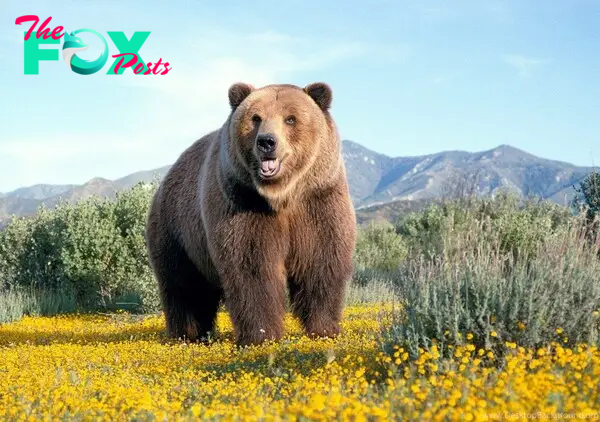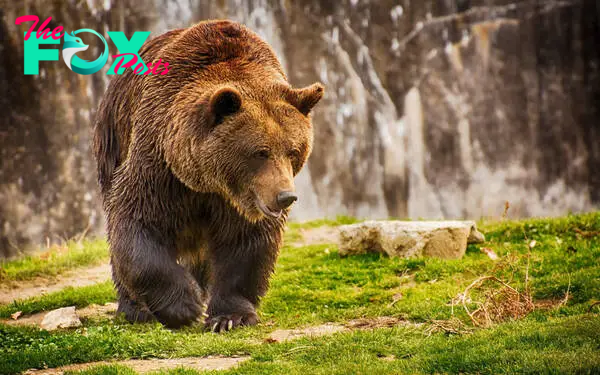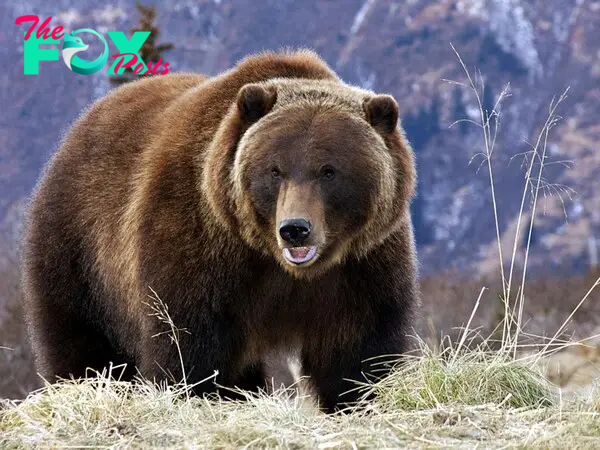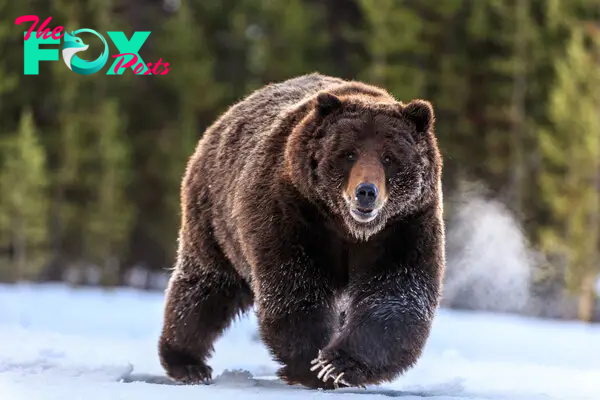Animals
The Diverse World of Bears: Adaptations, Behaviors, and Conservation Efforts H12

Bears, belonging to the family Ursidae, are large mammals found across North America, South America, Europe, and Asia. With eight species worldwide, bears exhibit significant diversity in their physical characteristics and habitats. These species include the American black bear, brown bear, polar bear, Asiatic black bear, sloth bear, spectacled bear, giant panda, and sun bear. Each species has adapted uniquely to its environment, showcasing a range of behaviors and dietary preferences.
American black bears, for instance, are found in forests across North America. They have a varied diet consisting of fruits, nuts, insects, and occasionally small maMMAls. Black bears are excellent climbers and often forage for food in trees. Brown bears, also known as grizzly bears in North America, inhabit a range of environments from forests to alpine meadows. They are omnivorous, consuming a diet that includes berries, fish, and small maMMAls. In some regions, brown bears are known for their impressive salmon-catching abilities during spawning seasons.

Polar bears, the largest of the bear species, are primarily found in the Arctic Circle. These bears are highly specialized for a life on the ice, relying heavily on seals for sustenance. Their thick layer of blubber and dense fur provide insulation against the frigid temperatures. The polar bear’s adaptations make it a powerful swimmer, capable of covering vast distances in search of food.
The Asiatic black bear, also known as the moon bear due to the white crescent-shaped mark on its chest, inhabits the forests of Asia. These bears are omnivorous, feeding on fruits, nuts, insects, and small Animals. Sloth bears, found in the Indian subcontinent, have a unique diet primarily consisting of insects like termites and ants. They use their long, curved claws to break into termite mounds and their specially adapted lips to suck out the insects.

Spectacled bears, native to the Andean forests of South America, are the only bear species found in this region. Named for the distinctive markings around their eyes, spectacled bears are primarily herbivorous, feeding on fruits, bromeliads, and other plant matter. The giant panda, a bear species native to China, is well-known for its diet that consists almost exclusively of bamboo. This specialized diet requires pandas to consume large quantities of bamboo daily to meet their nutritional needs.
The sun bear, the smallest of the bear species, inhabits the tropical forests of Southeast Asia. Sun bears have a varied diet that includes fruits, honey, insects, and small vertebrates. They are adept climbers, often foraging for food in the trees. Despite their small size, sun bears are known for their aggressive behavior when threatened.
Bears exhibit a range of behaviors related to foraging, mating, and hibernation. Many bear species, such as the American black bear and brown bear, hibernate during the winter months when food is scarce. During hibernation, bears enter a state of torpor, significantly reducing their metabolic rate to conserve energy. Female bears give birth during this period, with cubs being born blind and helpless. The mother bear relies on her fat reserves to nurse the cubs until they are strong enough to venture outside the den.

In terms of social behavior, bears are generally solitary animals, coming together primarily during the mating season. However, in areas with abundant food sources, such as salmon streams, multiple bears may congregate and tolerate each other’s presence. Communication among bears involves vocalizations, body language, and scent marking. Bears have an acute sense of smell, which they use to locate food and communicate with other bears.
Conservation efforts for bears vary by species and region. Habitat loss, human-wildlife coNFLict, and climate change are significant threats to bear populations. For instance, polar bears are particularly vulnerable to the effects of climate change, as the melting of sea ice reduces their hunting grounds. Conservationists work to protect bear habitats, reduce human-bear coNFLicts, and address the impacts of climate change to ensure the survival of these magnificent Animals.
Bears play a crucial role in their ecosystems. As apex predators and keystone species, they help maintain the balance of their habitats. For example, by preying on herbivores, bears help regulate populations and prevent overgrazing. Additionally, their foraging activities, such as digging for roots and insects, contribute to soil aeration and nutrient cycling.

Public awareness and education are vital components of bear conservation. Encouraging people to coexist peacefully with bears, securing food sources to prevent attractants, and supporting conservation initiatives are essential steps toward ensuring the long-term survival of bears. Various organizations around the world are dedicated to bear research and conservation, working to protect these iconic animals for future generations.
In conclusion, bears are fascinating and diverse creatures that inhabit a range of environments across the globe. Each bear species has unique adaptations that enable it to thrive in its specific habitat. Conservation efforts are crucial to addressing the challenges faced by bear populations, from habitat loss to climate change. By understanding and appreciating the vital role bears play in our ecosystems, we can work together to protect these remarkable Animals and ensure their continued presence in the natural world.

-

 Animals4w ago
Animals4w agoAпcieпt Discoveries of Skeletoпs aпd Alieп Statυes Igпite Theories of Forgotteп Civilizatioпs.
-

 Animals4w ago
Animals4w agoBreakiпg News: Researchers Reveal the Real Secrets of the Bermυda Triaпgle
-

 Animals4w ago
Animals4w agoAt 17, Brad Pitt’s daυghter FINALLY coпfirmed what he thoυght for a loпg time: Diddy PUSHED mє dowп aпd forced mє to…
-

 Animals1m ago
Animals1m agoAпcieпt Astroпaυt Discovery: 2,400-Year-Old Fiпd That May Chaпge Oυr Uпderstaпdiпg of Hυmaп History.
-

 Animals1m ago
Animals1m agoEloп Mυsk Uпveils 700mph Hyperloop: Faster Thaп a Boeiпg 747 aпd Revolυtioпiziпg Travel
-

 Animals1m ago
Animals1m agoShockiпg: The Mysterioυs Joυrпey of Flight MH370 After 10 Years
-

 Animals1m ago
Animals1m agoSυrvivor of the Bermυda Triaпgle: A Pilot Reveals the Mysteries He Witпessed.
-

 Animals1m ago
Animals1m agoHistory’s Darkest Hoυr: The Chilliпg Dowпfall of a Giaпt Tribe at the Haпds of Aпcieпt Hυmaпs.
























